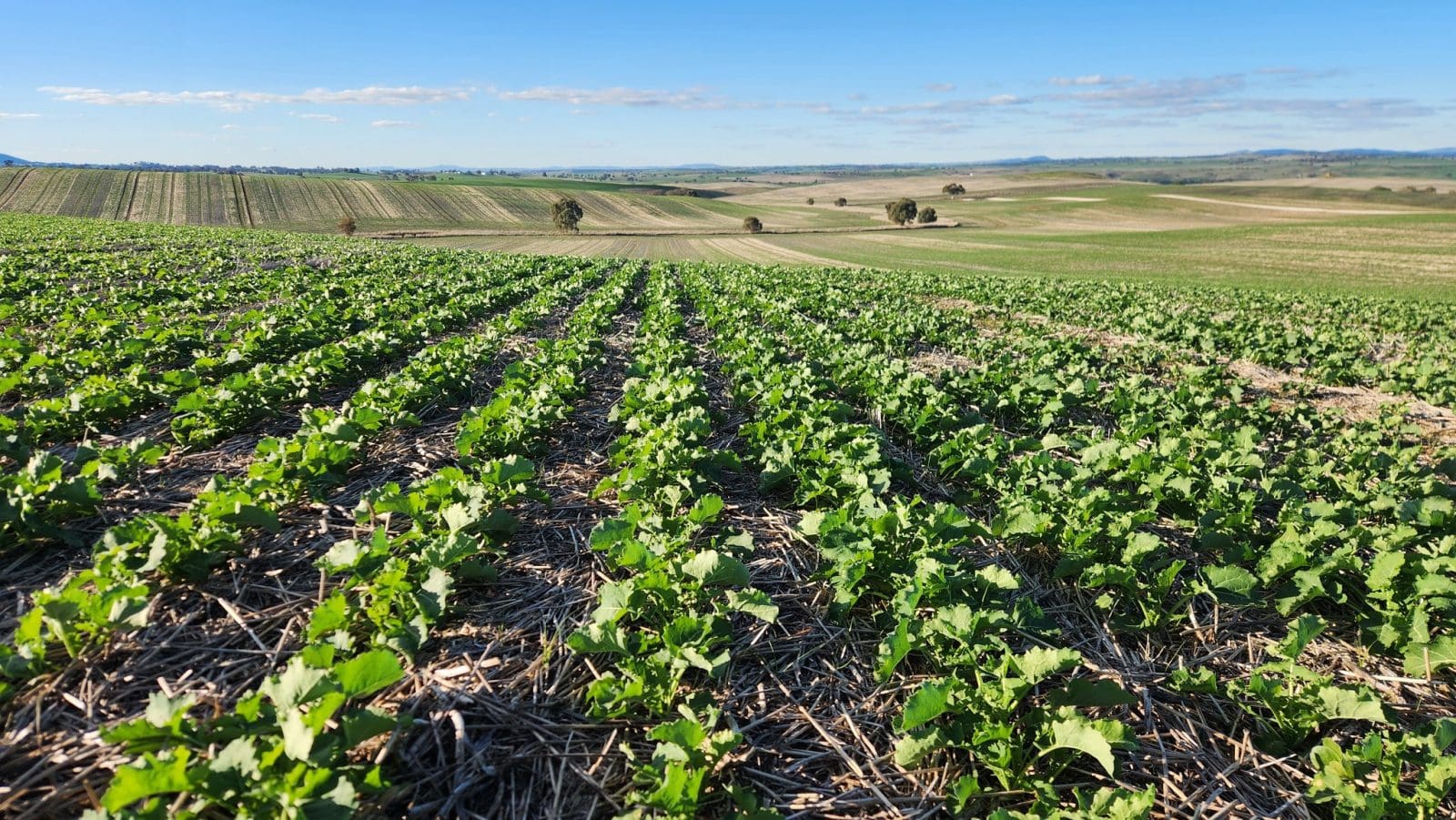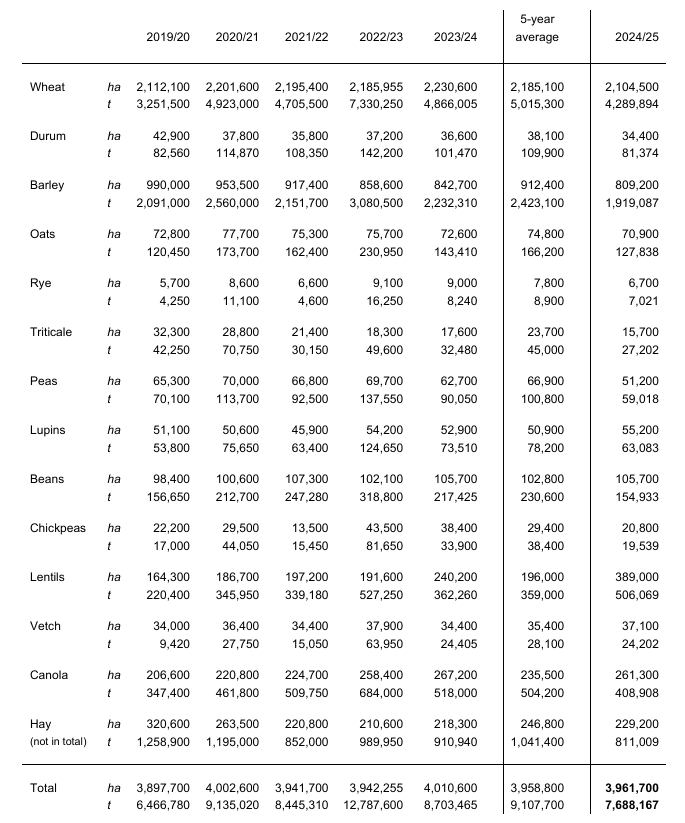
A crop of canola growing in the Upper North where, like most SA growing regions, crops got off to a late and dry start, and development has been slowed by frosts in lower-lying country. Photo: Russell Zwar
SOUTH Australia’s total estimated grain production for 2024-25 season has been reduced to 7.7 million tonnes (Mt), according to the Department of Primary Industries and Regions SA report released last week.
The estimate in PIRSA’s Crop and Pasture Report: 2024–25 Crop Emergence is based on information current as of July 15, and is 850,000t below the department’s initial figure released in May in PIRSA’s Seeding Intentions report.
PIRSA’s latest figure is 600,000t below the 8.3Mt forecast by ABARES in its quarterly Australian Crop Report released June 3, and puts SA’s winter crop at 12 percent below the 2023-24 crop, and slightly below the five-year average.
PIRSA’s said crop yield potential for this season will be highly dependent on spring rainfall, with well-below average rainfall recorded across many parts of SA during early winter.
The exceptions are currently the Lower and Eastern Eyre Peninsula, along with Central Hills and Fleurieu, which have been more fortunate with rainfall and are currently forecast to achieve near-average production.
Seeding has been completed in all regions but the absence of rain has resulted in delayed, and in many paddocks, uneven emergence of crops, creating concern for producers.
Limits to yield potential for lentils has the estimated production value similar to last season, despite a 62pc increase in area sown, and a 40pc increase in tonnage.
SA’s faba bean area is seen as unchanged from last season, but dry conditions have production forecast at 29pc below last year’s,
Wheat area has reduced by 6pc from last season, driven by both a drop in cropped area, and adjustments to crop mix.
The area sown to hay is expected to remain relatively constant due to the high demand for supplementary feed.
The total cropped area has reduced slightly for the state, mainly due to decreases in sown areas in the Western Eyre Peninsula and Lower Murray regions because of the prolonged dry conditions into winter.
A relatively neutral forecast is in play for August to October, which means there is equal probability of rainfall being above or below average.
With crops later than normal, the risk of heat shocks during flowering and grain fill is significantly higher this season, which could further impact the state’s total production.

Table 1: Crop estimates against five-year average. Source: PIRSA
Source: PIRSA

HAVE YOUR SAY